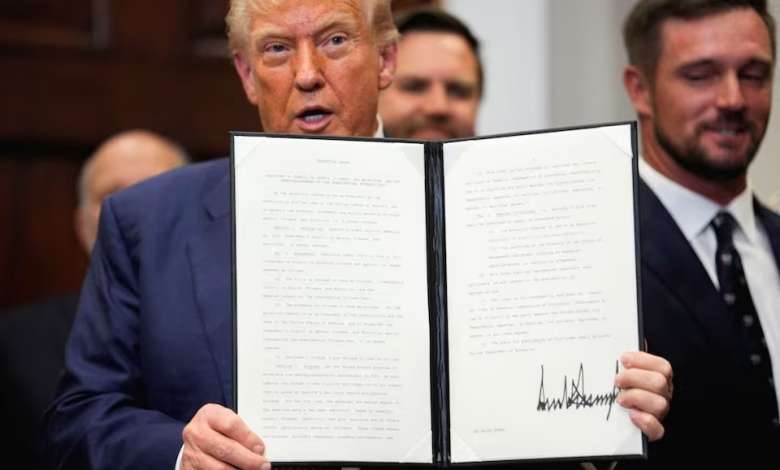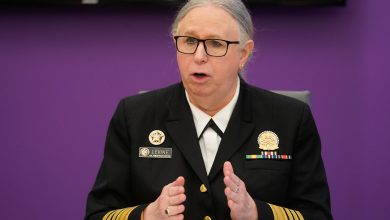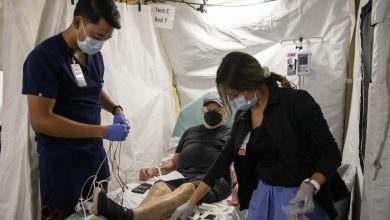Trump’s Drug Pricing Experiment Could Redefine Big Pharma Relations

Few issues spark as much debate in the United States as the soaring cost of prescription drugs. For decades, Americans have paid significantly higher prices than patients in other developed nations, placing a financial burden on households and creating a political battleground for reform. Former President Donald Trump’s drug pricing experiment, introduced during his administration and still influencing policy conversations today, attempted to shake up the established relationship between the U.S. government and the pharmaceutical industry. While controversial, it highlighted the tension between affordability, innovation, and the entrenched power of Big Pharma.
The historical context of drug pricing in America, the details of Trump’s initiatives, the industry’s response, and the potential long-term consequences that may reshape the pharmaceutical landscape for years to come.
The Landscape of Drug Pricing in the U.S.
The U.S. healthcare system is unique in how it handles prescription drug pricing. Unlike most advanced economies, the American government does not directly negotiate prices for most medications. Instead, pharmaceutical companies largely set their own prices, and insurance companies or pharmacy benefit managers (PBMs) attempt to negotiate discounts. This system often leaves patients, particularly those without strong insurance coverage, exposed to high out-of-pocket costs.
Key features of the U.S. drug pricing model include:
- Patent protection: Brand-name drugs enjoy market exclusivity, allowing companies to charge high prices without immediate competition.
- Lack of direct negotiation: Until recently, Medicare—the largest purchaser of drugs—was barred from negotiating prices directly.
- Global imbalance: Americans often subsidize research and development by paying higher prices than patients in Canada, Europe, or Asia, where governments negotiate aggressively.
By the late 2010s, prescription drug costs had become a leading concern for voters. Polls showed bipartisan frustration, creating fertile ground for Trump to launch a populist challenge to Big Pharma’s pricing practices.
Trump’s Approach to Drug Pricing Reform
Trump’s administration adopted an aggressive stance toward pharmaceutical companies, promising to deliver “the biggest step to lower drug prices in the history of the United States.” His experiment combined rhetoric with several policy moves that challenged industry norms.
1. The “Most Favored Nation” (MFN) Rule
Perhaps the boldest proposal was the Most Favored Nation rule, which sought to peg the price of certain Medicare Part B drugs to the lowest price paid in comparable developed countries. This was revolutionary for U.S. policy, effectively importing international reference pricing into Medicare.
- The rule threatened to significantly cut revenue for drugs like cancer therapies and biologics.
- Pharmaceutical companies argued it would stifle innovation by slashing profits used for research.
- Legal challenges and industry lobbying delayed implementation, but the concept remains a reference point in current debates.
2. Transparency and Advertising Rules
Trump also targeted consumer awareness by requiring drugmakers to list list-prices in TV ads. Although later struck down in court, the move symbolized his attempt to use public pressure as a bargaining chip.
3. Executive Orders on Rebates
The administration attempted to eliminate rebates paid to PBMs, which Trump argued inflated drug costs and kept the system opaque. The proposal was controversial because it risked raising insurance premiums even while lowering pharmacy prices.
4. Importation of Cheaper Drugs
Trump supported allowing states to import lower-cost drugs from Canada. While this policy saw limited implementation, it signaled a willingness to disrupt traditional pharmaceutical supply chains.
Collectively, these measures represented an experiment—an attempt to rewire the delicate balance of power between government, industry, and consumers.
Big Pharma’s Reaction
The pharmaceutical industry mounted a swift and coordinated response. Major trade groups like PhRMA (Pharmaceutical Research and Manufacturers of America) argued that Trump’s measures would:
- Reduce R&D investment: By slashing profit margins, companies warned fewer innovative therapies would make it to market.
- Undermine safety: Critics claimed drug importation could expose patients to counterfeit or unsafe medications.
- Violate contracts: Industry leaders argued that retroactively changing pricing structures for Medicare Part B would destabilize the market.
Behind the scenes, pharmaceutical lobbyists used their deep influence in Washington to challenge rules in court, delay implementation, and sway public opinion. While Trump’s rhetoric painted drug companies as villains, the administration also had allies within industry who sought compromise.
The Political Dynamics
Trump’s experiment was as much about politics as policy. It aligned with his broader “America First” agenda, positioning him as a champion against powerful corporations and foreign governments. Yet, the complexity of drug pricing meant outcomes were mixed.
- Bipartisan support: Democrats praised elements like international reference pricing, which mirrored proposals from progressives.
- Republican hesitation: Many conservatives balked at what they saw as government overreach into free markets.
- Public opinion: Polls showed Americans supported measures to lower drug costs, even if they risked industry backlash.
Trump leveraged the issue in campaign speeches, but the lack of fully enacted reforms left his legacy on drug pricing contested.
Lessons Learned from Trump’s Experiment
Though many of Trump’s policies were delayed, struck down, or only partially implemented, they set important precedents that continue to shape the conversation.
- Breaking the taboo: By proposing international reference pricing, Trump shattered a political barrier that had previously shielded Big Pharma from such direct cost comparisons.
- Public transparency: The push to disclose list prices in ads, while legally blocked, reinforced the demand for transparency in healthcare.
- Global awareness: The experiment highlighted the stark differences between U.S. drug prices and those abroad, fueling public frustration.
- Industry vulnerability: Big Pharma showed its ability to resist change, but also revealed cracks in its armor as bipartisan momentum for reform grew.
How Biden and Future Administrations Have Built on This
President Joe Biden inherited Trump’s unfinished reforms and has pursued his own strategies. The Inflation Reduction Act of 2022 gave Medicare limited power to negotiate prices for certain high-cost drugs, a historic breakthrough influenced in part by Trump’s groundwork.
- Medicare negotiations will begin in 2026, targeting blockbuster drugs with no generic competition.
- Out-of-pocket caps for seniors on Medicare Part D are being phased in.
- Penalties for drug companies that raise prices faster than inflation are now law.
These moves reflect a continuity of the populist push against pharmaceutical pricing power. While the two administrations differ in ideology, both challenged the long-standing dominance of Big Pharma.
Implications for Big Pharma
Trump’s experiment and its aftermath could redefine how pharmaceutical companies operate in the U.S.:
- Pressure on pricing models: Companies can no longer assume unlimited freedom to set prices. Global benchmarking is becoming a serious consideration.
- Shift in lobbying strategies: Pharma may pivot toward compromise, supporting limited reforms to stave off harsher measures.
- Innovation vs. affordability debate: The central question remains—how to balance funding breakthrough therapies with the public demand for affordability.
- Global ripple effects: If the U.S. adopts pricing reforms, pharmaceutical companies may alter global pricing strategies, possibly raising prices abroad to compensate.
The Human Element
Beyond politics and profits, the debate is deeply personal for millions of Americans. Patients with chronic illnesses like diabetes, cancer, or autoimmune diseases often face devastating financial burdens. Trump’s experiment resonated with these voters because it acknowledged their struggles.
Consider:
- Insulin prices, which tripled in the decade before Trump’s presidency, became a rallying point.
- Cancer patients often pay tens of thousands annually in co-pays, even with insurance.
- Many Americans report skipping doses or splitting pills to make prescriptions last longer.
By centring the issue on affordability, Trump tapped into a raw and enduring frustration.
Looking Ahead: Could Relations Truly Be Redefined?
Trump’s experiment did not topple Big Pharma, but it forced the industry to reckon with a shifting political reality. For decades, drug companies had enjoyed bipartisan protection, arguing that high prices were justified by innovation. That narrative has weakened.
Future scenarios include:
- Deeper government intervention: If Medicare negotiations prove successful, future administrations may expand the program’s reach.
- Compromise-driven reform: Industry may propose voluntary price caps or rebate models to maintain influence.
- Ongoing political weaponisation: Drug prices will remain a campaign issue, used by candidates across the spectrum to signal populist credentials.
Regardless of the path chosen, Trump’s bold, if uneven, experiment has redefined the terms of debate.
Conclusion
Donald Trump’s drug pricing experiment was never a fully realised revolution, but it was a seismic jolt to the status quo. By proposing international reference pricing, attacking opaque rebate systems, and flirting with drug importation, his administration challenged decades of pharmaceutical dominance in Washington.
While legal and political obstacles blunted many reforms, the ripple effects continue. Biden’s Medicare negotiation powers, public frustration over costs, and growing bipartisan appetite for accountability all trace back, in part, to Trump’s willingness to confront Big Pharma.
In the end, Trump’s experiment may be remembered less for what it achieved in practice and more for what it made possible: a reimagining of the relationship between the U.S. government, patients, and one of the world’s most powerful industries. Whether that redefinition leads to lower costs without sacrificing innovation remains one of the most important healthcare questions of our time.




